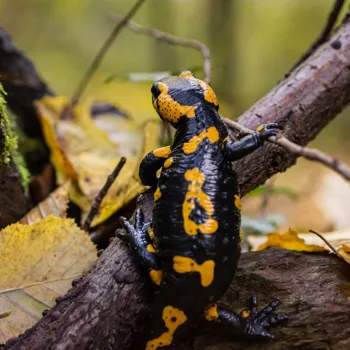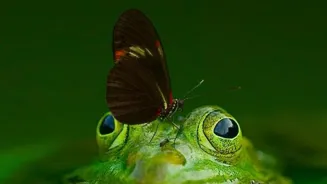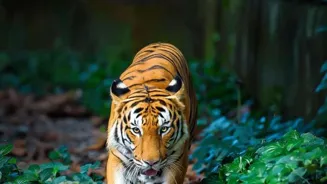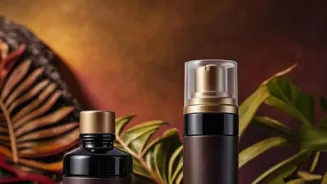Discover the Hidden World of Amphibians: 10 Mind-Blowing Facts Await! Unravel the secrets of these fascinating creatures
The world around us is full of amazing creatures, big and small. Among these, amphibians,
like frogs, toads, and salamanders, often get overlooked. But these fascinating animals have some seriously cool secrets!
Let's dive into the mysterious world of amphibians and uncover 10 facts that might just blow your mind. Get ready to be amazed by these slippery, slimy, and utterly captivating creatures!
Amphibians
Masters of Dual Lives: The very word "amphibian" comes from the Greek word meaning "double life." This is because most amphibians start their lives in water, like fish, breathing through gills. As they grow, they undergo metamorphosis, transforming into adults who can live both in water and on land.
This incredible transformation is a defining characteristic of amphibians and allows them to thrive in diverse environments. Think of it like a real-life Pokemon evolution, but way more fascinating! Not all amphibians follow this perfectly, though.
Some remain entirely aquatic, while others spend their entire lives on land, adapting to their specific environments. This adaptability is what makes them so resilient and diverse.
From the Amazon rainforest to the Himalayan mountains, amphibians have found ways to survive and thrive in a variety of habitats, showcasing their remarkable ability to adapt and evolve.
Skin Deep Secrets
Amphibian skin is not just for show; it's a vital organ. Unlike us, amphibians can breathe through their skin! This cutaneous respiration allows them to absorb oxygen directly from the water or air.
However, this also makes them incredibly vulnerable to pollution, as their skin easily absorbs harmful chemicals. Think of their skin like a super-sensitive sponge, soaking up everything around them.
This is why amphibians are often considered bio-indicators, meaning their health reflects the overall health of their environment. A decline in amphibian populations can be a warning sign that something is wrong in the ecosystem.
So, protecting amphibian habitats is not just about saving these amazing creatures; it's about protecting our own health and the health of the planet. Their skin plays a crucial role in maintaining their life processes.
Tongue-Tastic Hunters
Frogs and toads are known for their incredible tongues, which they use to snatch up insects and other tasty treats. But did you know that their tongues are attached to the front of their mouths, not the back like ours?
This allows them to flick their tongues out at lightning speed, grabbing their prey in a fraction of a second. Some frogs can even extend their tongues further than their body length! Imagine having a built-in, super-fast, sticky lasso to catch your dinner. That's the power of a frog's tongue.
This unique adaptation makes them highly efficient hunters, playing a vital role in controlling insect populations. They are natural pest controllers, keeping our gardens and ecosystems in balance.
So, the next time you see a frog, remember it's not just a cute little creature; it's a skilled predator with a tongue-tastic superpower.
Amphibian Colors
More Than Just Pretty: The vibrant colors of many amphibians are not just for attracting mates. They often serve as a warning to predators. Bright colors like red, orange, and yellow can signal that an amphibian is poisonous or distasteful.
This is called aposematism, and it's a clever way for amphibians to protect themselves. Imagine wearing a sign that says, "Warning: Do Not Eat!" That's essentially what these colorful amphibians are doing.
The poison dart frogs of South America are a prime example, boasting dazzling colors that warn predators of their deadly toxins. But not all colorful amphibians are poisonous. Some use camouflage to blend in with their surroundings, making them difficult for predators to spot.
This incredible variety of colors and patterns showcases the amazing diversity of amphibians and their ingenious survival strategies. The colors also act as a way to show their beauty.
Cold-Blooded Champions
Amphibians are ectothermic, or "cold-blooded," meaning they rely on external sources of heat to regulate their body temperature. This is why you often see frogs basking in the sun or hiding in cool, damp places. Their body temperature fluctuates with the temperature of their environment.
This adaptation allows them to conserve energy, but it also makes them vulnerable to extreme temperature changes. Imagine being completely dependent on the weather to control your body temperature. That's the life of an amphibian.
In colder climates, some amphibians hibernate underground or underwater to survive the winter. They slow down their metabolism and enter a state of dormancy until warmer weather returns. This remarkable ability to adapt to varying temperatures is crucial for their survival in diverse environments.
The process is crucial for their survival.
Super Salamanders
Regeneration Masters: Salamanders possess an extraordinary ability to regenerate lost limbs, tails, and even parts of their hearts and brains! This incredible feat of healing has fascinated scientists for years, and they are studying salamanders to learn more about regenerative medicine.

Imagine being able to regrow a lost arm or leg. That's the power of a salamander. This remarkable ability is not just limited to external body parts. Some salamanders can even regenerate damaged organs, making them a subject of intense scientific research.
Scientists hope to unlock the secrets of salamander regeneration and apply them to human medicine, potentially leading to new treatments for injuries and diseases. The power is really amazing.
AI Generated Content. Glance/InMobi shall have no liability for the content











